- The Debate Changes: Is It Still "Fiber or Copper?" Or "fiber, copper or mobile?"
- In
all the online magazines, blogs and newsletters I read, the tone is
becoming more strident. Copper advocates are crowing loudly about
making UTP cabling support 10G Ethernet or copper subscriber links
utilizing the latest version of DSL. Fiber advocates, meanwhile, remain
devoted "techies" who calmly point out fibers well-known advantages of
distance, bandwidth and EMI immunity, plus the upgradeability that
makes fiber's lifecycle cost much lower than copper.
What
the copper crowd is not talking about is the power consumption of
transceivers that can drive 10 Gb/s down copper (it's even proportional
to the cable length) or the fact that DSL has peaked, in part because
the technology is bandwidth limited for triple play (VDV) applications
or that DSL-capable subscriber lines are becoming scarce (see Don McCarty's assesment in OSP Magazine.)
What
cabling advocates are rarely discussing is that neither is going to be
the winner of every contest nor can they ignore the rising importance
of the "mobile user." In reality, copper, fiber and wireless have their
appropriate applications.
What has become obvious is the desire of many users to have mobility. We probably shouldn't say wireless, as the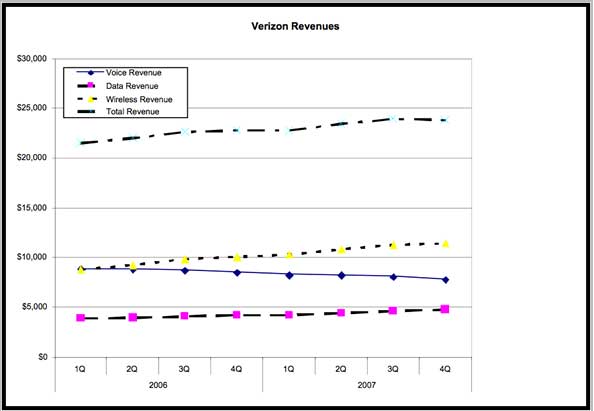 users don't really care about what wireless system they use, as long as
they are mobile. Today, more laptops are sold than desktop computers.
Users expect to bring them to meetings and have wireless access to the
network. They expect to take them home, to lunch, coffee, on road
trips, in hotels, and use them wherever they are. Most laptops connect
on WiFi (IEEE 802.11) and the latest versions allow reasonably fast
access - fast enough for most business applications (watching YouTube
is genrally not considered a corporate necessity!) On the home front,
most telcos are losing landline customers as more convert to just using
cell phones as their primary contact number. (See graph > courtesy
of IGI Group)
users don't really care about what wireless system they use, as long as
they are mobile. Today, more laptops are sold than desktop computers.
Users expect to bring them to meetings and have wireless access to the
network. They expect to take them home, to lunch, coffee, on road
trips, in hotels, and use them wherever they are. Most laptops connect
on WiFi (IEEE 802.11) and the latest versions allow reasonably fast
access - fast enough for most business applications (watching YouTube
is genrally not considered a corporate necessity!) On the home front,
most telcos are losing landline customers as more convert to just using
cell phones as their primary contact number. (See graph > courtesy
of IGI Group)
A new
generation of portable devices, including BlackBerries, iPhones and new
ultra lightweight PCs are all based on wireless connections and many
allow connection to WiFi or cell phone networks. These devices are
multipurpose devices, allowing voice communications, text messaging,
email, web browsing and even watching video or getting directions.
Thus any communications network, private or public, if it intends to accommodate all users, must plan to offer
all three options. The copper crowd will probably find themselves left
to connect the non-power users, still using desktop PCs tethered to a
Cat 5/5E/6 cable in the office or a dial-up or DSL link at home. The
users who really need (or want) bandwidth at the desktop or home,
mostly for engineering, design or entertainment, will be using fiber.
The rest of the users, those mobile users we talked about, want
wireless.
As long as wireless is connected on a big pipeline
backbone, like fiber, expanding wireless services is pretty cheap and
easy. For WiFi, access points need at least 1 Gb/S to accommodate the
latest WiFi standard (801.11n) and upgrades are simply a matter or
plugging in some new access points. Cell networks already operate on
fiber backbones, so hardware upgrades are simple also.
Forget the
hype - ignore the hard sell that any one technology solves every
problem - and think about the big picture. Each communications
technology has its place in the scheme of things.
- Fiber Applications: Extending our view of the world
Mostly those
of us in fiber optics deal in voice, video or data communications,
where fiber’s low loss and high bandwidth drive applications. But there
are lots of other applications that fiber enhances, and we’d like to
look at one.
Many of us marveled at the photos of the Titanic
taken by the team headed by Dr. Robert D. Ballard that discovered the
shipwreck twenty years ago (1986.) But how many of us realized the
photos we saw were made possible by a special type of fiber optic cable?
Until Dr. Ballard’s team at Woods Hole Oceanographic Institute
developed a unique new type of undersea tether cable for ROVs (remotely
operated vehicles) that combined steel for strength, copper for power
and fiber optics for signals, ROVs were limited to tether lengths too
short to find shipwrecks at the depth of the Titanic. Using fiber to
replace heavy coax cable for video and signals and using high voltage
(about 1800v) for power to reduce current loads allowed to make a cable
much lighter and stronger than conventional cable. The lighter cable
allowed the ROV called Jason to dive deeper than ever before, producing
the historic photos of the Titanic and many more undersea sites.
 The smaller size and lighter weight of fiber has also allowed ROVs to
be made smaller, reducing costs and allowing them to be used for new
applications. For example, Seabotix in San Diego, makes a ROV only 500
mm (20 inches) long. Seabotix (http://www.seabotix.com/), founded by
Don Rodocker, calls them “MiniROVs” and pionts out these smaller, more
maneuverable ROVs are ideal for tasks like inspecting bridges, piers,
underwater pipelines and the like. They are even used to search for
bodies and inspect water storage tanks, a much safer method than using
scuba divers.
The smaller size and lighter weight of fiber has also allowed ROVs to
be made smaller, reducing costs and allowing them to be used for new
applications. For example, Seabotix in San Diego, makes a ROV only 500
mm (20 inches) long. Seabotix (http://www.seabotix.com/), founded by
Don Rodocker, calls them “MiniROVs” and pionts out these smaller, more
maneuverable ROVs are ideal for tasks like inspecting bridges, piers,
underwater pipelines and the like. They are even used to search for
bodies and inspect water storage tanks, a much safer method than using
scuba divers.
Don’t think Seabotix MiniROVs are limited in
range. They have depth ratings to 600 meters (2000 feet) with tethers
as long as 750 m (2460 ft). A unique feature is the fiber optic media
converters are built into the cables, not the ROV itself, allowing
easier sealing of the cables and connections and repair. The cables
also transmit power to the ROV.
The Seabotix web site
(http://www.seabotix.com/) has lots of information on uses and some
really nice photos like the one shown here. It’s worth a viewing!
Undersea Cable Cuts Hamper Internet Access in Middle East, Asia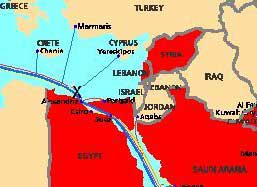
The
suspicious cutting of two (or maybe three or four, depending on your
sources) undersea cables in the Mediterranean created a bottleneck in
communications to the Middle East and to many high tech companies in
India. The news we read was somewhat unclear whether two cables or
three were cut and how it happened. Reports that a ship dragging an
anchor was the culprit were countered by the lack of any ships reported
in the area. Repair of the cables took about one week and may have been
the reason that the owners of one decided to lay another cable over a
similar route.
Overall, the incident showed how vulnerable
communications can be when large percentages of traffic are on a few
fiber optic cables, how important geographic diversity is (physically
separating cables) and how necessary alternative routing is. (Map from Daily Wireless)
Contractor Specializes In Fiber-Based Municipal Traffic & Airport Systems
From Joe Salimando's Newsletter for TED*
EMCOR Group, Oct. 25
Tony Guzzi, president/COO:
"Similarly-and
3,000 miles away on the West Coast-our Dynalectric Los Angeles company
will be working with the city of Los Angeles providing traffic signal
upgrades at 51 intersections with the installation of new fiber optic
cable to connect these intersections back to the city's traffic
management center.
"This project is part of L.A.'s automated traffic
surveillance and control system that monitors traffic in real time and
selects the appropriate signal timing to optimize vehicle flow. Not an
easy job; it's something EMCOR does very well, and has done numerous
times."
"...and in Chicago...
"Gibson has also just started a
segment of the modernization of O'Hare's North Airfield, The project
consists of construction of two remote transmitter receiver sites for
the FAA. Construction of a new North Airfield, airport surveillance
radar system, construction of new duct banks at various locations for
routing of 220,000 feet of fiber-optic transmission line.
"...Gibson
is the leading electrical, service and construction company in the
Chicagoland area. It's had 95 years of operation. It's the largest
full-service provider of technology and electrical solutions. And its
revenues average about $100 million. It has about 400 electricians, 100
telecom technicians."
*Complete newsletter: http://www.tedmag.com/common/webnewslink.asp?currentpage=5016
- Bell Labs - Made Telecom What It Is Today
- I
first visited AT&T Bell Labs in Murray Hill New Jersey in 1969,
working with some of the semiconductor and materials researchers when I
started in business as an applications/sales engineer for anayltical
instruments. I was amazed at the lobby itself - a giant map of the
AT&T long distance network flashing to indicate traffic loads,
copies of AT&T technical papers scattered on the meeting tables and
a chance to rub elbows with Nobel-prize winners!
- A
decade later I met some of the pioneers of fiber optics who inspired my
founding Fotec. I was not alone, as Bell Labs spawned many fiber optic
startups.
- Following the breakup of
AT&T in 1984, Bell Labs was split up also and its parts became less
research and more development, shrinking from its peal of 24,000+
employees including more than 3,000 PhDs to a few small labs. The
history is fascinating, and Telephony Magazine has printed a really
good article about them:
Bell Labs: Reviving an icon, Telephony Online, Feb 11, 2008 12:00 AM, By Kevin Fitchard
Wanted: Users with older cable plants interested in testing them for bandwidth. Contact the FOA .
IGI Announces 2008 Update of the "POF Sourcebook" 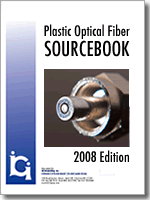
A Unique Reference on the Plastic Optical Fiber Industry
POF
Sourcebook" is more than just a compilation of companies and their POF
products. The POF Sourcebook" is a true reference book for those
interested in opportunities and competitive information on the POF
market. It contains a range of materials on the industry, companies,
contacts, research and development, products, and a whole lot more!
Here are a few of types of information contained in the Sourcebook:
Companies with POF products
Companies that have exited the field and reasons why
New startups entering into the field
POF research at universities and organizations around the world
Key contacts in the POF field
POF publications
Major tradeshows in the field
History of developments in the POF field
These
are just some of the types of information in the "POF Sourcebook". It
should be of value to those in the industry to find partners and joint
ventures, investors looking for new markets, companies looking to get
into the POF business, consultants, Venture Capitalists,
Government and Organizations Promoting Optical Clusters, and others
just wanting to keep an eye on the industry.
For further information and table of contents, see:
http://www.igigroup.com/pub/directories/pofsource.html
-
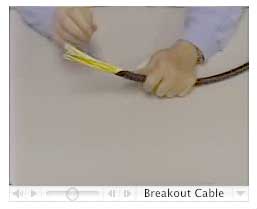 FOA Tech Topics - New Videos FOA Tech Topics - New Videos
- We continue expanding the Tech Topics section and have added
some videos. These
videos, in a format familiar to the "You Tube" users
among you, cover cable prep, termination with epoxy/polish connectors,
mechanical splicing and insertion loss testing.
- You need Quicktime to view these
videos which you can download free here from the Apple
website.
- If you know of other videos
(especially manufacturer training videos) that we might be able
to get permission to include here, let us know.
-
- A Valid Question On The OM3
Fiber System
- An instructors at one of the
FOA-Approved schools had an interesting question on the OM3 standard.
He wanted to know if connectors and panel-mounted mating adapters
should be color coded aqua too. Well, certainly they should,
but connector manufacturers are reluctant to produce yet another
colored connector.
- For ages, beige connectors were
multimode, blue singlemode and green singlemode APC. In today's
cable plants, beige is already used for both 50 and 62.5 fiber.
Obviously any connector on an aqua cable is going to be OM3.
In the past, we've had all metal connectors (e.g. ST, FC) that
could not be colored and color-coded individual fibers in a distribution
cable, so strain relief boots were made in colors for identification.
- For ST connectors, in particular,
several manufacturers made colored stickers to put around the
mating adapters on patch panels, a good solution to identify
the fibers terminated at that position.
-
-
- Read
the whole story about OM3 Cabling in The November FOA Newsletter
-
- FTTH
Notes:
-
- What's AT&T up to?
- The FOA was contacted by a reporter
in Ohio regarding AT&T's local plans for FTTH and U-Verse
Internet TV service. Read
the story here.
-
-
- Verizon FiOS
- Verizon is now deploying GPON
in its network in new developments in California, Maryland, Massachusetts,
New Jersey, New York, Rhode Island, Pennsylvania, Virginia, and
Texas. GPON offers more bandwidth than the BPON currently used,
allowing more features for FiOS TV for example. See this Lightwave
article for more info. Where is Verizon offfering FiOS service?
See this map.
-
- Want To Learn More About
FTTx?
- The FOA has created a special
FTTx resources
section of our website with a FTTx
links page with lots of links to news, market reports, technical
articles and vendor technical and product information. Here
is a great place to start learning more about FTTx.
- FOA's CFxT FTTx Certification Program
Explained
- Read the Broadband Properties article
about the FOA FTTx certification program. Read
the article about FOA President Jim Hayes being honored for his
work promoting FTTH.
-
-
- End Users Need Advice Too
- Most technical information on
fiber optics seems to be aimed at installers, but at the FOA
we get lots of phone calls from end users. Often they are confused
and want advice: Should they use fiber or copper? What components
should they choose (and why?) What does a fiber optic system
design require? Can they install fiber themselves or should they
hire a contractor? How do they find a contractor? What should
the contract with the contractor include? What are the requirements
for testing and documenting a network? And sometimes, we get
a fiber optic network user who asks "My system is down?
What can I do?"
- Well the FOA has started addressing
the needs of the end user. A new section of the FOA website will
be devoted to the end user, trying to cover all these questions
and more - as the users call us to ask.
- Don't assume the information
is just for users, not installers, contractors and consultants.
It's information you need to be familiar with also, and we'd
suggest you tell all your customers about it, as it will help
explain fiber optics in terms they will understand and help you
and them communicate about fiber optic projects.
-
The
Fiber Optic Association User's Guide To Fiber Optic System Design
and Installation
- http://www.thefoa.org/user/
-
- Installing Fiber Optics?
Have You Seen These?
- We get lots of calls here at
the FOA looking for advice. Many are from people unfamiliar with
fiber optics who are planning an installation, having an installation
done or testing and troubleshooting problems. To answer these
questions, we have created a standard on installation, NECA/FOA-301
and three Tech
Bulletins for users and installers. These, plus all the information
in our "Tech
Topics" section, will answer many of your questions.
It's where most of our callers are sent for detailed explanations
they can print and distribute to interested parties.
|
|
|
Digging Safely 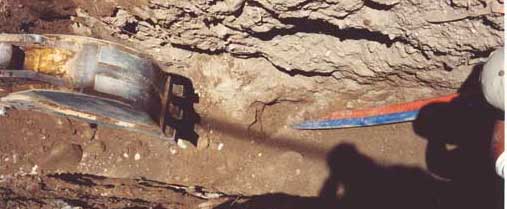
The old story (not a joke!) about
the most likely fiber optic communications system failure being
caused by "backhoe fade" reminds us that digging safely
is vitally important. The risk is not just interrupting communications,
but the life-threatening risk of digging up high voltage or gas
lines.
There is a website called "Common Ground Alliance"
that focuses directly on this issue. Here is how they describe
themselves:
- Damage Prevention is a
Shared Responsibility
- The Common Ground Alliance
(CGA) is a member-driven association dedicated to ensuring public
safety, environmental protection, and the integrity of services
by promoting effective damage prevention practices.
In recent years, the association has established itself as the
leading organization in an effort to reduce damages to all underground
facilities in North America through shared responsibility
among all stakeholders.
Of special interest is their
"Best
Practices" Manual, available for downloading. If you
do OSP installs, please get yourself a copy and read it.
http://www.commongroundalliance.com/
There is a new toll-free
"call before you dig" number: 811
See www.call811.com
for more information
National
Fiber Optic Protection Summit:
By the "811" group. March, 2008 in Vegas.
Home Tech - Needed To Take
Advantage of FTTH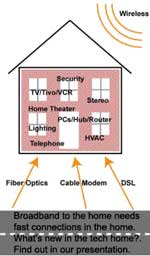
Once a home has a broadband connection,
which we hope is fiber to the home, but could be DSL or Cable
Modem, the usage of all that bandwidth depends on distribution
within the home. The in-home connections can be UTP or Coax copper,
wireless or fiber. But architects and home builders must learn
how to build homes to take advantage of broadband connections.
The FOA, in conjunction with the Structured Cabling Association,
have started working with home builders to bring them up to speed.
You can see the first tutorial we have jointly developed at the SCA website.
FOA & SCA Helps California
Homebuilders Understand High Tech Homes
-
The FOA and Structured
Cabling Association are combined forces to discuss how broadband
connections like FTTH requires new thinking from homebuilders
on how homes should be designed and built to provide high speed
connections inside the home so the family can take advantage
of all that broadband offers. The presentation was part of the
Building Industry Show educational program sponsored by the Building
Industry Association of Southern California.
- Even with home sales in a slump,
a good group came to hear Jim Hayes discuss why high tech cabling
offers a way for builders to makes homes more attractive to buyers
and more profitable. It also offers great job opportunities for
cabling installers and contractors.
- Want to see the presentation?
Go here.
-
|
- Download This!
-
- There are tons of technical
application notes and videos on the web, and occasionally we
recommend some you should download. The JDSU fiber testing guide
is really worthwhile, as are the ADC FTTx book and Westover video
on fiber inspection and cleaning, linked below.
-
- JDSU Testing Book
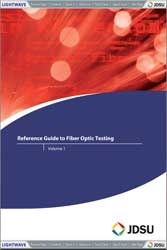 JDSU offers a free download of their
Testing Guide from the Lightwave website. This is one great book
which explains some basic fiber technology, but the real value
is the last half which deals with OTDR testing. Not only does
it give the usual info, but it covers important topics like measurement
uncertainties and anomolies like ghosts and gainers. JDSU offers a free download of their
Testing Guide from the Lightwave website. This is one great book
which explains some basic fiber technology, but the real value
is the last half which deals with OTDR testing. Not only does
it give the usual info, but it covers important topics like measurement
uncertainties and anomolies like ghosts and gainers.
-
- I was in the testing business
for 20+ years at Fotec and think this book is one of the best
fiber optic testing texts available. It's complete but comprehenisble!
I used to believe that premises techs did not need OTDR training,
but now OTDR manufacturers are pushing their use in premises
networks. Unfortunately, the limitations of OTDRs in premises
applications can cause extreme problems for those who are not
aware of their limitations. So knowing hows OTDRs work is essential
information to every tech.
JH
-
- Download yourself a copy and
read it! http://lw.pennnet.com/whitepapers/wp.cfm?id=665
-
- Westover Application Notes
And Cleaning Video
- Westover has several application
notes on inspecting and cleaning fiber optic connectors. The
video is a big file (50+MB) but a good tutorial.
- Download page: http://www.westoverfiber.com/Support/downloads.php
-
- ADC's Book On FTTx
- ADC has an excellend book on
FTTx. Here is a link to request a copy: http://www.adc.com/productsandservices/productsolutions/fttp/book/index.jsp
-
-
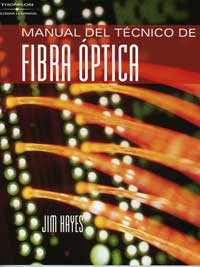 Now In Spanish: FOA Textbook
& Text For FOA Advanced Certifications Now In Spanish: FOA Textbook
& Text For FOA Advanced Certifications
- The FOA's textbook, The
Fiber Optic Technicians Manual, is used by our approved
schools around the world to teach fiber optics. Book Details:
Manual Del Technico De Fibra Optica, Published by Thomson
Delmar Learning, ISBN 1-4180-6121-2
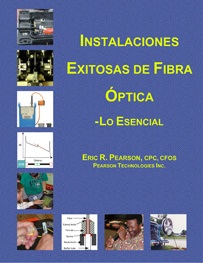
- If you are getting started
in fiber optics and Spanish is your native language, you can
download an introduction to fiber optics in Spanish here.
-
- Eric Pearson's book that is
used for the CFOS/I reference book, Successful
Fiber Optic Installation, is also now available in Spanish.
-
- Contact the FOA for more information.
-
-
-
-
-
- NEW-FOA Technical Bulletins/Tech
Topics
-
- New Videos! Here
-
- Testing Update
- Are there really 5 different
ways to test optical fiber cabling after installation? Why so
many? How do the measurements - and more importantly the measurement
results - differ? What are the advanteages and disadvantages
of each method?
- Why
are there 4 ways (maybe 5) to test fiber optic cables?
- Do
OTDRs and OLTS tests give the same results?
-
- Technical Bulletins
- How do you design and manufacture
fiber optic systems? Choose and install one to serve your communications
needs? Troubleshoot problems? The FOA Fiber Optic Technical Bulletins
will provide step-by-step guidelines to help you. All are
PDF files you can download, print and use.
- Designing
and manufacturing fiber optic communications products for manufacturers.
- Choosing,
installing and using fiber optic producst for users.
- Troubleshooting
fiber optic cable plants and communcations systems.
-
- New Tech Topics
- Updated link
specs for fiber optic networks - now includes 10G Ethernet.
- FAQs (Frequently Asked Questions)
on General Topics and Testing
- Fiber Or Copper? Making decisions,
overview and LANs
- How
do you clean connections?
|
|
Links:
Bob Ballard of FOA-Approved
School BDI Datalink
has a neat website with some good technical content. Be sure to pay particular attention
to these pages:
http://www.bdidatalynk.com/mythsoffiberoptics.html
and http://www.bdidatalynk.com/askdoctor.html
Like Good Technical Videos?
Try NECA/IBEW/JATC's
Electric TV.
- Job
Openings
Linden Photonics, Inc. has
a jop opening described below:
Linden Photonics, Inc., is a
small business that develops packaging technology using extrusion/molding
of novel thermoplastics.
Currently Linden has three SBIR
contracts that are funded over the next two years. They relate
to extrusion of high performance thermoplastics on optical fiber
and metal wire harness for use in demanding DoD environments.
Linden subcontracts extrusion to outside vendors and performs
value added qualification testing in-house.
Linden is looking to hire an
engineer with at least 5 years experience to run two of these
contracts. The job will broadly require the following:
·
I Interfacing/monitoring outside vendors
· Documenting results
and planning follow-up actions/experiments.
·
Develop, design, implement in-house test stations. AUTOCAD or
Solid Works experience desirable.
·
Assist and write SBIR proposals.
The larger responsibility is
to help grow and built a small business so that it successfully
transitions from contract to commercial sales using the technology
developed under SBIR contracts.
If this sounds interesting please
contact:
Amaresh Mahapatra
President
Linden Photonics, Inc.
270 Littleton Rd., # 29
Westford, MA 01886
tel. 978-392-7985
am@lindenphotonics.com
- Fiber/Copper Instructor in
the Baltimore area.
- Our Fiber Optic/Copper Cable
Network Program is a 72 hour, non-credit program aimed at providing
entry-level skills for students interested in obtaining an a
position in the telecommunications industry. Typically the class
is scheduled for Tuesday and Thursday evenings from 6 - 10 pm
on our Catonsville Campus. Our immediate needs are for
someone to teach 8 Fiber (Copper has been completed) classes
beginning on 11/13 and ending on 12/11/07; the next program will
begin in April of 08. Would consider putting a piece in
your newsletter requesting anyone interested in teaching to send
me their resume. A Bachelor's degree and industry experience
are required. If possible, could you email me a sample of your
newsletter.
Mary Lou Beach
Program Coordinator
The School of Applied and Information Technology
410-455-4515
410-455-4564 Fax
mbeach@ccbcmd.edu
-
- Engineering Assistant
- Job Description
- Under the direction of Design
and Development Engineers build and test prototype and preproduction
parts
Assist Engineering to create, develop, modify and implement joining
processes including soldering, welding, epoxy fixing, glass sealing
and fixing
Assist Engineering to develop and implement processes relating
to fibers, fiber pigtail assemblies and connector/receptacle
assemblies
Perform wire bond, ribbon bond processes
Perform hermetic sealing and testing processes
Assist with necessary testing and qualification of parts. Testing
will include optical, electrical and RF parameters.
Assist with documenting designs, processes and procedures
Assist Engineers with transferring to and training Production
staff
- Skills Required
- Excellent knowledge of hybrid
microelectronic assembly equipment
Excellent hands-on assembly and test skills
Ability to work with limited guidance independently
Extensive experience with hybrid microelectronic assembly processes
Prior experience with fiber optic and/or optoelectronic devices
Good working knowledge of electronic and RF test instrumentation
strongly desired.
-
- Education and Experience
- >3years relevant work experience
At least ASEE or equivalent
- Inside Technical Sales
- Job Description
- Support in-coming calls for
technical/application questions.
Provide quotes, quote follow-ups and closing of sales.
Developing of new customers/business through prospecting, re-engagement
of inactive accounts and introduction of new products.
Represent sales in weekly meetings regarding production schedules,
forecasting, quality control and custom projects.
Manage RMA's (Returned Material Authorization) from initial customer
discussion through internal review and final conclusions.
Work with procurement to ensure on-time material deliveries.
Interact with engineering regarding technical questions and custom
requests.
Keep account information updated, run daily contact reports and
manage ACT our account management database software.
- Education and Experience
- Engineering Degree, EE preferred.
5 years technical sales experience.
Optics/Photonics background preferred.
-
- Please forward resumes to:
Pauline Molenaar
Office Manager
EM4 Inc.
7 Oak Park Drive
Bedford, MA 01730
781-275-7501 x 252
781-275-7659-Fax
pmolenaar@em4inc.com
-
-
-
- Project Manager
- Celergy Networks, Carlsbad,
CA, a leading provider of voice and data networking and structured
cabling installations, seeks Project Managers for Telecommunications.
Candidates must be able to work in a fast-paced environment,
multi-task, be able to quickly identify potential roadblocks
and facilitate solid solutions, and have strong customer service
skills.
- Responsibilities include coordinating
labor, materials and customer scheduling required for implementation
of projects to meet and or exceed customer expectations and deadlines,
daily communication and reporting to customer on status of work,
margin control of projects, interaction and team work with engineer,
accounting and purchasing manager to ensure a profitable and
smooth implementation.
- The Successful Candidate Will
Have:
- Strong organizational and communication
skills required.
Strong negotiation skills and experience in negotiating pricing
reduction
3+ years experience in customer service and/or help desk related
work preferably within Telecom industry, but not required.
Working knowledge of Windows NT, especially word, excel, power
point, adobe.
MS project and IS09000, 9001, etc experience preferred, but not
required.
Understanding and basic knowledge of PM process and procedures
Ability to follow process and procedures, enhanced with ability
to identify improvements and suggest changes if required for
improvement for greater efficiency and customer service.
Experience in Project Management of multiple accounts simultaneously
preferred.
Strong interpersonal skills and experience working with a team
required.
Basic knowledge in cabling/infrastructure preferred.
-
- The salary range for a project
manager currently offered is between 40k- to 60k / year,
based on experience.
- Lucia Romanov-Stark
Director of Marketing
Celergy Networks, Inc.
2011 Palomar Airport Road, Suite 200
Carlsbad, CA 92011
Phone: (760) 268-1913 x 6134
Fax: (760) 603-8577
Mobile: (949) 374-2334
http://www.celergy.com
-
-
-
- Verizon: Fiber Network Field
Technician (Outside Field Technician)
- Openings in the following areas:
CA, TX, WA, OR, VA, MA, NJ, RI
-
- Take your career to new heights
at a company that's a leader in global communications: Verizon.
We offer an unparalleled opportunity to advance your career while
contributing in an enthusiastic, team-oriented environment.
- Primary duties include, but
are not limited to:
- Install, remove, rearrange,
program, test, troubleshoot and maintain fiber network services.
Install and configure routers, set top boxes. May assist
with installation of PC software as needed and ensure proper
configuration of the customer's PC. Interact with the Fiber
Solution Center as needed. May install appropriate inside
wire/cable.
Install, maintain and repair outside and inside fiber equipment/facilities
including inside wiring and fiber jumpers at the distribution
hub.
Interface with customer to negotiate the placement of equipment;
may assist with account registration, e-mail, and web access,
and training the customer on how to use the new equipment. Ensure
customer satisfaction. Respond to inquiries and provide
follow-up, as necessary.
Interpret schematic work order drawings to determine job specifications
and installation needs. Order and/or obtain required equipment.
Effect problem solving where appropriate.
Utilize various test equipment to analyze equipment trouble and
take appropriate maintenance action.
- Skills/Requirements:
- Requires high level of customer
contact to ensure customer satisfaction.
Climbing poles and ladders; lifting 75-100 pounds on a regular
basis; pushing, reaching, bending and stooping; manual dexterity;
good sense of balance; and good color vision.
Must have a current/valid California Drivers License and a clean
driving record.
Qualified candidates must pass all company required tests, a
pre-employment drug screen and a background check. In addition,
candidates will be required to successfully pass a legally required
DOJ Criminal Records Check/screening process (fingerprinting).
Candidates must be able to work any shift given, including days,
weekends, holidays and overtime as required.
- Verizon offers:
- Hourly rate for this position
is $12.87-28.55. Wage credit may be granted for related
work experience and/or college degree.
Benefits include medical, dental, life insurance, 401(k) with
Company match and paid vacation
- interested candidates should
go to https://www22.verizon.com/about/careers/fiberjobs.html
to apply AND schedule themselves for testing.
- Thank you for showing an
interest in Verizon!
Verizon is an equal opportunity/affirmative action employer supporting
workforce diversity. m/f/d/v. Principals only!
-
-
-
-
-
- Also Check Recent Job Openings
In Previous Issues of The FOA Newsletter
|
|
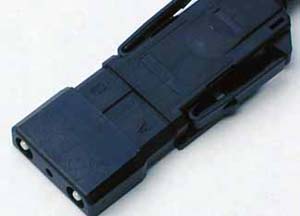
-
- Tech Puzzler
- Recognize this connector?, see below.
-
-
-
-
- Answer
below
-
-
-
- Understanding FOA Certifications
- To answer questions on FOA certifications,
we've created several new web pages:
- Overview
of FOA certifications
- CFOT
- CFxT
- AFOT
- CFOS
- Training
Requirements - What Schools Are Teaching
-
- Reading these will help you
understand what each FOA certification covers and how to prepare
for them.
-
- New Professional Society
for Structured Cabling Recognizes Importance of Fiber Optics
(and Wireless)
- The new Structured Cabling Association,
Inc. (http://www.scausa.org/)
is a professional society aimed at installers of "structured
cabling" or premises cabling. Structured cabling has been
focused on so-called "Cat 5" or UTP cabling for years,
while network speeds have left UTP behind. Now most backbones
for LANs are fiber optics and every network seems to have wireless.
The SCA, founded in part by FOA activists Tom Collins and Jim
Hayes, intends to make structured cabling training and certification
more relevant to today's world.
-
-
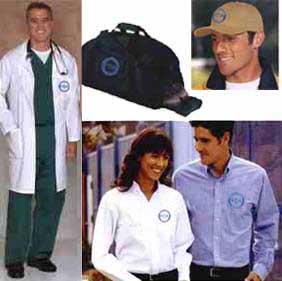 FOA Logo Merchandise FOA Logo Merchandise
- FOA has arranged with EmbroidMe
to provide FOA logo merchandies. Identify yourself as a FOA-certified
tech or instructor. The lab coats are super impressive for either
cabling techs and instructors. Check
out the selection.
-
-
- FOA Certification Top Choice
The FOA CFOT and CFOS programs continue to gain momentum in fiber
optics. Over 23,000 CFOTs have been certified by over 200 schools.
Since our founding in July, 1995, we have dedicated ourselves
to promoting fiber optics and professionalism in fiber optics
personnel, focusing on education and certification. We are continuing
to add new schools and more CFOTs as users of fiber optics learn
that a CFOT is the indication of a professional, well-trained
fiber optic technician. Now with FTTH (fiber to the home) finally
taking off, demand for CFOTs is rising and schools are responding
by expanding programs rapidly.
- The FOA now has approved programs
at 160+ organizations, welcoming new additions like the Joint
Apprenticeship and Training Committee of the International Brotherhood
of Electrical Workers, Corning
Cable Systems and AFL
for their installation training programs and NASA's Goldstone
Tracking Station. The complete list of FOA-Approved schools is
at http://www.thefoa.org/foa_aprv.htm.
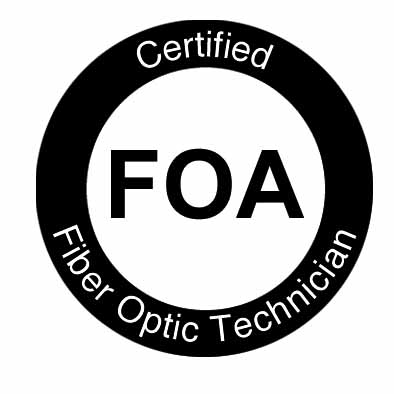
Your Name, CFOT - It pays
to advertise!
The FOA encourages CFOTs to use
the logo on their business cards, letterhead, truck or van, etc.
and provides logo
files on this site for that purpose. But we are also asked
about how to use the CFOT or CFOS certifications. Easy, you can
refer to yourself as "Your Name, CFOT" or "Your
Name, CFOS/T" for example.
Feel free to use the logo and
designations to promote your achievements and professionalism!
|
|
Remember To Renew Your Certification
!
Remember to renew your FOA certification.
All current CFOTs have a ID Card with their certification data
and we keep a database of current CFOTs to answer inquiries regarding
your qualifications if needed. You must be a current FOA member
and CFOT to participate in our online
database of installers, contractors, technicians and consultants.
If you forgot to renew, use the online
application form to renew NOW!
|
|
-
- To
Contact The FOA:
-
- The
Fiber Optic Association
- 1119 S Mission Road,
# 355
- Fallbrook, CA 92028
-
- Office Hours 10AM-5
PM Pacific Time
- Telephone: 760-451-3655
- Fax: 781-207-2421
- info@thefoa.org
Want to write for the FOA
Newsletter? Send us articles, news, anything you think might
be interesting to the rest of the membership!
Return
to The FOA Home Page
(C)1999-2008, The Fiber Optic Association, Inc.
|
- Tech Puzzler:
It's an ESCON connector,
used on IBMs mainframe peripheral network. See the connector
ID page on Tech Topics.
See the Lennie Lightwave
for a complete tutorial on OTDRs and more.
|


 users don't really care about what wireless system they use, as long as
they are mobile. Today, more laptops are sold than desktop computers.
Users expect to bring them to meetings and have wireless access to the
network. They expect to take them home, to lunch, coffee, on road
trips, in hotels, and use them wherever they are. Most laptops connect
on WiFi (IEEE 802.11) and the latest versions allow reasonably fast
access - fast enough for most business applications (watching YouTube
is genrally not considered a corporate necessity!) On the home front,
most telcos are losing landline customers as more convert to just using
cell phones as their primary contact number. (See graph > courtesy
of IGI Group)
users don't really care about what wireless system they use, as long as
they are mobile. Today, more laptops are sold than desktop computers.
Users expect to bring them to meetings and have wireless access to the
network. They expect to take them home, to lunch, coffee, on road
trips, in hotels, and use them wherever they are. Most laptops connect
on WiFi (IEEE 802.11) and the latest versions allow reasonably fast
access - fast enough for most business applications (watching YouTube
is genrally not considered a corporate necessity!) On the home front,
most telcos are losing landline customers as more convert to just using
cell phones as their primary contact number. (See graph > courtesy
of IGI Group)

